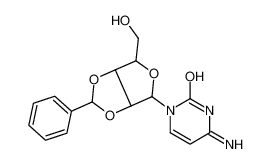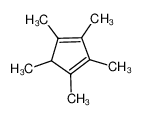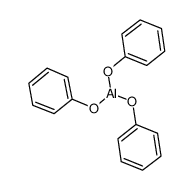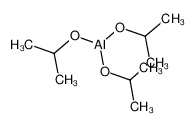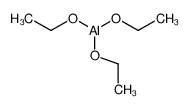1.Identification
1.1 GHS Product identifier
| Product name | aluminium atom |
|---|
1.2 Other means of identification
| Product number | - |
|---|---|
| Other names | aluminium Powder |
1.3 Recommended use of the chemical and restrictions on use
| Identified uses | For industry use only. Food additives |
|---|---|
| Uses advised against | no data available |
1.4 Supplier's details
| Company | MOLBASE (Shanghai) Biotechnology Co., Ltd. |
|---|---|
| Address | Floor 4 & 5, Building 12, No. 1001 North Qinzhou Road, Xuhui District, Shanghai, China |
| Telephone | +86(21)64956998 |
| Fax | +86(21)54365166 |
1.5 Emergency phone number
| Emergency phone number | +86-400-6021-666 |
|---|---|
| Service hours | Monday to Friday, 9am-5pm (Standard time zone: UTC/GMT +8 hours). |
2.Hazard identification
2.1 Classification of the substance or mixture
no data available
2.2 GHS label elements, including precautionary statements
| Pictogram(s) | no data available |
|---|---|
| Signal word | no data available |
| Hazard statement(s) | no data available |
| Precautionary statement(s) | |
| Prevention | no data available |
| Response | no data available |
| Storage | no data available |
| Disposal | no data available |
2.3 Other hazards which do not result in classification
no data available
3.Composition/information on ingredients
3.1 Substances
| Chemical name | Common names and synonyms | CAS number | EC number | Concentration |
|---|---|---|---|---|
| aluminium atom | aluminium atom | 7429-90-5 | none | 100% |
4.First-aid measures
4.1 Description of necessary first-aid measures
General advice
Consult a physician. Show this safety data sheet to the doctor in attendance.
If inhaled
Fresh air, rest.
In case of skin contact
Rinse skin with plenty of water or shower.
In case of eye contact
First rinse with plenty of water for several minutes (remove contact lenses if easily possible), then refer for medical attention.
If swallowed
Rinse mouth.
4.2 Most important symptoms/effects, acute and delayed
Excerpt from ERG Guide 170 [Metals (Powders, Dusts, Shavings, Borings, Turnings, or Cuttings, etc.)]: Oxides from metallic fires are a severe health hazard. Inhalation or contact with substance or decomposition products may cause severe injury or death. Fire may produce irritating, corrosive and/or toxic gases. Runoff from fire control or dilution water may cause pollution. (ERG, 2016)
Excerpt from ERG Guide 135 [Substances - Spontaneously Combustible]: Fire will produce irritating, corrosive and/or toxic gases. Inhalation of decomposition products may cause severe injury or death. Contact with substance may cause severe burns to skin and eyes. Runoff from fire control may cause pollution. (ERG, 2016)
Excerpt from ERG Guide 138 [Substances - Water-Reactive (Emitting Flammable Gases)]: Inhalation or contact with vapors, substance or decomposition products may cause severe injury or death. May produce corrosive solutions on contact with water. Fire will produce irritating, corrosive and/or toxic gases. Runoff from fire control may cause pollution. (ERG, 2016)
Excerpt from ERG Guide 169 [Aluminum (Molten)]: Contact causes severe burns to skin and eyes. Fire may produce irritating and/or toxic gases. (ERG, 2016)
4.3 Indication of immediate medical attention and special treatment needed, if necessary
Diagnosis: when history is unattainable, diagnosis depends on the demonstration of large amount of aluminum in vomitus, stomach contents or feces. /Aluminum compounds/
5.Fire-fighting measures
5.1 Extinguishing media
Suitable extinguishing media
Large fires must be isolated and allowed to burn out, but small ones can be controlled by sand, talc, or sodium chloride.
5.2 Specific hazards arising from the chemical
Excerpt from ERG Guide 170 [Metals (Powders, Dusts, Shavings, Borings, Turnings, or Cuttings, etc.)]: May react violently or explosively on contact with water. Some are transported in flammable liquids. May be ignited by friction, heat, sparks or flames. Some of these materials will burn with intense heat. Dusts or fumes may form explosive mixtures in air. Containers may explode when heated. May re-ignite after fire is extinguished. (ERG, 2016)
Excerpt from ERG Guide 135 [Substances - Spontaneously Combustible]: Flammable/combustible material. May ignite on contact with moist air or moisture. May burn rapidly with flare-burning effect. Some react vigorously or explosively on contact with water. Some may decompose explosively when heated or involved in a fire. May re-ignite after fire is extinguished. Runoff may create fire or explosion hazard. Containers may explode when heated. (ERG, 2016)
Excerpt from ERG Guide 138 [Substances - Water-Reactive (Emitting Flammable Gases)]: Produce flammable gases on contact with water. May ignite on contact with water or moist air. Some react vigorously or explosively on contact with water. May be ignited by heat, sparks or flames. May re-ignite after fire is extinguished. Some are transported in highly flammable liquids. Runoff may create fire or explosion hazard. (ERG, 2016)
Excerpt from ERG Guide 169 [Aluminum (Molten)]: Substance is transported in molten form at a temperature above 705°C (704.44°C). Violent reaction with water; contact may cause an explosion or may produce a flammable gas. Will ignite combustible materials (wood, paper, oil, debris, etc.). Contact with nitrates or other oxidizers may cause an explosion. Contact with containers or other materials, including cold, wet or dirty tools, may cause an explosion. Contact with concrete will cause spalling and small pops. (ERG, 2016)
5.3 Special protective actions for fire-fighters
Wear self-contained breathing apparatus for firefighting if necessary.
6.Accidental release measures
6.1 Personal precautions, protective equipment and emergency procedures
Use personal protective equipment. Avoid dust formation. Avoid breathing vapours, mist or gas. Ensure adequate ventilation. Evacuate personnel to safe areas. Avoid breathing dust. For personal protection see section 8.
6.2 Environmental precautions
Personal protection: particulate filter respirator adapted to the airborne concentration of the substance. Sweep spilled substance into covered dry containers.
6.3 Methods and materials for containment and cleaning up
Environmental considerations: Water spill: Use natural barriers or oil spill control booms to limit spill travel. Use natural deep water pockets, excavated lagoons, or sand bag barriers to trap material at bottom. Remove trapped material with suction hoses.
7.Handling and storage
7.1 Precautions for safe handling
Avoid contact with skin and eyes. Avoid formation of dust and aerosols. Avoid exposure - obtain special instructions before use.Provide appropriate exhaust ventilation at places where dust is formed. For precautions see section 2.2.
7.2 Conditions for safe storage, including any incompatibilities
Separated from strong oxidants, strong bases, strong acids and water. See Chemical Dangers. Dry. Well closed.Store in cool, dry, well-ventilated location. Separate from acids, alkalies, halogenated compounds, oxidizers, combustible materials.
8.Exposure controls/personal protection
8.1 Control parameters
Occupational Exposure limit values
Recommended Exposure Limit: 10-Hr Time-Weighted Avg: 10 mg/cu m (total). /Aluminum/
Recommended Exposure Limit: 10 Hr Time-Weighted Avg: 5 mg/cu m (resp). /Aluminum/
Recommended Exposure Limit: 10 Hr Time-Weighted Avg: 2 mg/cu m. /Aluminum (soluble salts and alkyls, as Al)/
Recommended Exposure Limit: 10 Hr Time-Weighted Avg: 5 mg/cu m. /Aluminum (pyro powders and welding fumes, as Al)/
Biological limit values
no data available
8.2 Appropriate engineering controls
Handle in accordance with good industrial hygiene and safety practice. Wash hands before breaks and at the end of workday.
8.3 Individual protection measures, such as personal protective equipment (PPE)
Eye/face protection
Safety glasses with side-shields conforming to EN166. Use equipment for eye protection tested and approved under appropriate government standards such as NIOSH (US) or EN 166(EU).
Skin protection
Wear impervious clothing. The type of protective equipment must be selected according to the concentration and amount of the dangerous substance at the specific workplace. Handle with gloves. Gloves must be inspected prior to use. Use proper glove removal technique(without touching glove's outer surface) to avoid skin contact with this product. Dispose of contaminated gloves after use in accordance with applicable laws and good laboratory practices. Wash and dry hands. The selected protective gloves have to satisfy the specifications of EU Directive 89/686/EEC and the standard EN 374 derived from it.
Respiratory protection
Wear dust mask when handling large quantities.
Thermal hazards
no data available
9.Physical and chemical properties
| Physical state | silver |
|---|---|
| Colour | Tin-white, malleable, ductile metal, with somewhat bluish tint |
| Odour | Odorless |
| Melting point/ freezing point | 660ºC |
| Boiling point or initial boiling point and boiling range | 2460°C(lit.) |
| Flammability | Combustible Solid, finely divided dust is easily ignited; may cause explosions.Flammable. |
| Lower and upper explosion limit / flammability limit | no data available |
| Flash point | 645ºC |
| Auto-ignition temperature | 760°C |
| Decomposition temperature | no data available |
| pH | no data available |
| Kinematic viscosity | no data available |
| Solubility | Insoluble (NIOSH, 2016) |
| Partition coefficient n-octanol/water (log value) | no data available |
| Vapour pressure | 0 mm Hg (approx) (NIOSH, 2016) |
| Density and/or relative density | 2.7g/mLat 25°C(lit.) |
| Relative vapour density | no data available |
| Particle characteristics | no data available |
10.Stability and reactivity
10.1 Reactivity
no data available
10.2 Chemical stability
In moist air, oxide film forms which protects metal from corrosion.
10.3 Possibility of hazardous reactions
...Finely divided aluminum dust is easily ignited... .Dust explosion possible if in powder or granular form, mixed with air.ALUMINUM POWDER, [COATED] is a reducing agent. Coating moderates or greatly moderates its reactivity compared to the uncoated material. Reacts exothermically if mixed with metal oxides and heated (thermite process). Heating a mixture with copper oxides caused a strong explosion [Mellor 5:217-19 1946-47]. Reacts with metal salts, mercury and mercury compounds, nitrates, sulfates, halogens, and halogenated hydrocarbons to form compounds that are sensitive to mechanical shock [Handling Chemicals Safely, 1980 p. 135]. A mixture with powdered ammonium persulfate and water may explode [NFPA 491M, 1991]. Heating a mixture with bismuth trioxide leads to an explosively violent reaction [Mellor 9:649, 1946-47]. Mixtures with finely divided bromates (also chlorates and iodates) of barium, calcium, magnesium, potassium, sodium or zinc can explode by heat, percussion, and friction, [Mellor 2:310, 1946-47]. Burns in the vapor of carbon disulfide, sulfur dioxide, sulfur dichloride, nitrous oxide, nitric oxide, or nitrogen peroxide [Mellor 5:209-212, 1946-47]. A mixture with carbon tetrachloride exploded when heated to 153° C and also by impact [Chem. Eng. News 32:258, 1954; UL Bull. Research 34, 1945; ASESB Pot. Incid. 39, 1968]. Mixing with chlorine trifluoride in the presence of carbon results in a violent reaction [Mellor 2 Supp. 1, 1956]. Ignites in close contact with iodine. Three industrial explosions involving a photoflash composition containing potassium perchlorate with aluminum and magnesium powder have occurred [ACS 146:210, 1945; NFPA 491M 1991]. Reacts with methyl chloride in the presence of small amounts of aluminum chloride to give flammable trimethylaluminum. Gives a detonable mixture with liquid oxygen [NFPA 491M 1991]. The reaction with silver chloride, once started, proceeds with explosive violence [Mellor 3:402 1946-47]. In an industrial accident, the accidental addition of water to a solid mixture of sodium hydrosulfite and powdered aluminum caused the generation of SO2, heat and more water. The aluminum powder reacted with water and other materials to generate more heat, leading to a deflagration that killed five workers [Case Study, Accident Investigation: Napp Technologies, 14th International Hazardous Material Spills Conference].
10.4 Conditions to avoid
no data available
10.5 Incompatible materials
A mixture of aluminum powder and ammonium nitrate can be used as an explosive. A number of explosions in which ammonium nitrate and aluminum are mixed with carbon, hydrocarbons, with or without oxidizing agents, have occurred.
10.6 Hazardous decomposition products
no data available
11.Toxicological information
Acute toxicity
- Oral: no data available
- Inhalation: no data available
- Dermal: no data available
Skin corrosion/irritation
no data available
Serious eye damage/irritation
no data available
Respiratory or skin sensitization
no data available
Germ cell mutagenicity
no data available
Carcinogenicity
A4: Not classifiable as a human carcinogen. /Aluminum metal and insoluable compounds/
Reproductive toxicity
no data available
STOT-single exposure
no data available
STOT-repeated exposure
no data available
Aspiration hazard
no data available
12.Ecological information
12.1 Toxicity
- Toxicity to fish: LC50 Salmo trutta (Brown trout, alevins) 19 ug/L/28 days; field study in upland Welsh streams /Conditions of bioassay not specified in source examined/ /Total monomeric aluminum
- Toxicity to daphnia and other aquatic invertebrates: LC50 Daphnia magna (Water flea) 9.5 mg/L/6 hr /Conditions of bioassay not specified in source examined/ /formulated product
- Toxicity to algae: no data available
- Toxicity to microorganisms: no data available
12.2 Persistence and degradability
no data available
12.3 Bioaccumulative potential
no data available
12.4 Mobility in soil
no data available
12.5 Other adverse effects
no data available
13.Disposal considerations
13.1 Disposal methods
Product
The material can be disposed of by removal to a licensed chemical destruction plant or by controlled incineration with flue gas scrubbing. Do not contaminate water, foodstuffs, feed or seed by storage or disposal. Do not discharge to sewer systems.
Contaminated packaging
Containers can be triply rinsed (or equivalent) and offered for recycling or reconditioning. Alternatively, the packaging can be punctured to make it unusable for other purposes and then be disposed of in a sanitary landfill. Controlled incineration with flue gas scrubbing is possible for combustible packaging materials.
14.Transport information
14.1 UN Number
| ADR/RID: UN3077 | IMDG: UN3077 | IATA: UN3077 |
14.2 UN Proper Shipping Name
| ADR/RID: ENVIRONMENTALLY HAZARDOUS SUBSTANCE, SOLID, N.O.S. |
| IMDG: ENVIRONMENTALLY HAZARDOUS SUBSTANCE, SOLID, N.O.S. |
| IATA: ENVIRONMENTALLY HAZARDOUS SUBSTANCE, SOLID, N.O.S. |
14.3 Transport hazard class(es)
| ADR/RID: 9 | IMDG: 9 | IATA: 9 |
14.4 Packing group, if applicable
| ADR/RID: III | IMDG: III | IATA: III |
14.5 Environmental hazards
| ADR/RID: no | IMDG: no | IATA: no |
14.6 Special precautions for user
no data available
14.7 Transport in bulk according to Annex II of MARPOL 73/78 and the IBC Code
no data available
15.Regulatory information
15.1 Safety, health and environmental regulations specific for the product in question
| Chemical name | Common names and synonyms | CAS number | EC number |
|---|---|---|---|
| aluminium atom | aluminium atom | 7429-90-5 | none |
| European Inventory of Existing Commercial Chemical Substances (EINECS) | Listed. | ||
| EC Inventory | Listed. | ||
| United States Toxic Substances Control Act (TSCA) Inventory | Listed. | ||
| China Catalog of Hazardous chemicals 2015 | Listed. | ||
| New Zealand Inventory of Chemicals (NZIoC) | Listed. | ||
| Philippines Inventory of Chemicals and Chemical Substances (PICCS) | Listed. | ||
| Vietnam National Chemical Inventory | Listed. | ||
| Chinese Chemical Inventory of Existing Chemical Substances (China IECSC) | Listed. | ||
16.Other information
Information on revision
| Creation Date | Aug 16, 2017 |
|---|---|
| Revision Date | Aug 16, 2017 |
Abbreviations and acronyms
- CAS: Chemical Abstracts Service
- ADR: European Agreement concerning the International Carriage of Dangerous Goods by Road
- RID: Regulation concerning the International Carriage of Dangerous Goods by Rail
- IMDG: International Maritime Dangerous Goods
- IATA: International Air Transportation Association
- TWA: Time Weighted Average
- STEL: Short term exposure limit
- LC50: Lethal Concentration 50%
- LD50: Lethal Dose 50%
- EC50: Effective Concentration 50%
References
- IPCS - The International Chemical Safety Cards (ICSC), website: http://www.ilo.org/dyn/icsc/showcard.home
- HSDB - Hazardous Substances Data Bank, website: https://toxnet.nlm.nih.gov/newtoxnet/hsdb.htm
- IARC - International Agency for Research on Cancer, website: http://www.iarc.fr/
- eChemPortal - The Global Portal to Information on Chemical Substances by OECD, website: http://www.echemportal.org/echemportal/index?pageID=0&request_locale=en
- CAMEO Chemicals, website: http://cameochemicals.noaa.gov/search/simple
- ChemIDplus, website: http://chem.sis.nlm.nih.gov/chemidplus/chemidlite.jsp
- ERG - Emergency Response Guidebook by U.S. Department of Transportation, website: http://www.phmsa.dot.gov/hazmat/library/erg
- Germany GESTIS-database on hazard substance, website: http://www.dguv.de/ifa/gestis/gestis-stoffdatenbank/index-2.jsp
- ECHA - European Chemicals Agency, website: https://echa.europa.eu/





